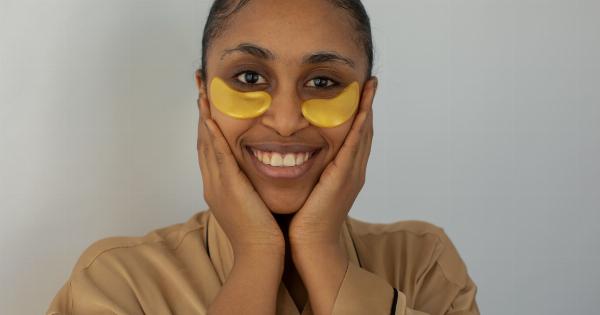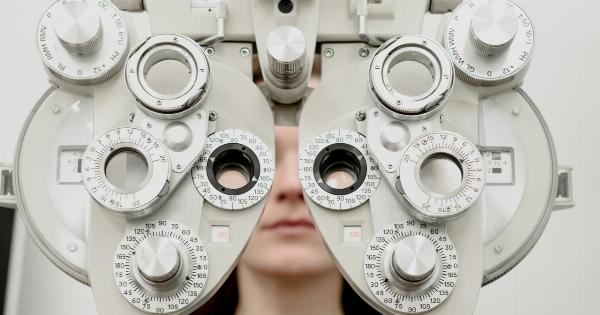Keratoconus is a progressive eye condition that affects the shape and strength of the cornea, leading to visual distortion and deterioration.
This disorder is characterized by the thinning and bulging of the cornea, resulting in an irregular cone-like shape. While there is no definitive cure for keratoconus, there are several effective treatments available that can manage its symptoms and improve visual acuity.
In this article, we will explore some of the most successful keratoconus treatment options available today.
1. Corneal Cross-linking (CXL)
Corneal cross-linking is a minimally invasive procedure that aims to halt the progression of keratoconus by strengthening the cornea.
During the procedure, the eye doctor applies a photosensitizing solution to the cornea, which is then activated using ultraviolet light. This process creates new bonds between collagen fibers in the cornea, making it more rigid and stable.
Corneal cross-linking has been proven to slow down the progressive nature of keratoconus and can often prevent the need for more invasive surgical interventions.
2. Intacs or Keraring Implants
Intacs or Keraring implants are small, clear crescent-shaped devices that are surgically inserted into the cornea to reshape the front surface of the eye.
These implants provide structural support to the cornea, reducing its irregular shape and improving visual acuity. Intacs and Keraring implants are typically recommended for individuals with moderate keratoconus who may not be suitable candidates for corneal transplantation.
3. Scleral Contact Lenses
Scleral contact lenses are large-diameter lenses that vault over the cornea and rest on the sclera, the white part of the eye.
Unlike traditional contact lenses, scleral lenses do not put pressure on the cornea, making them an excellent option for individuals with keratoconus. These specialized lenses help to create a smooth and regular corneal surface, compensating for the irregular shape caused by keratoconus and providing improved vision.
4. Hybrid Contact Lenses
Hybrid contact lenses combine the benefits of rigid gas-permeable (RGP) lenses with the comfort of soft lenses. These lenses have a rigid center for vision correction, surrounded by a soft outer ring for enhanced comfort.
Hybrid lenses are effective in managing keratoconus by providing excellent vision correction and minimizing the discomfort often associated with RGP lenses.
5. Custom Soft Contact Lenses
Custom soft contact lenses are specifically designed to match the unique contours of the keratoconic cornea. These lenses are made using advanced computer-assisted technology, ensuring a precise fit and optimal visual acuity.
Custom soft contact lenses can be an excellent option for individuals with mild to moderate keratoconus, offering good comfort and vision correction.
6. Piggybacking Contact Lenses
Piggybacking refers to a technique where a rigid gas-permeable (RGP) lens is placed on top of a soft contact lens.
This method allows the rigid lens to correct the corneal irregularities caused by keratoconus, while the soft lens provides cushioning and comfort. Piggybacking contact lenses can be a viable option for individuals who are unable to tolerate the discomfort associated with wearing RGP lenses alone.
7. Corneal Transplantation
In severe cases of keratoconus, where other treatments cannot provide sufficient visual improvement, corneal transplantation may be considered. During this procedure, the damaged cornea is surgically replaced with a healthy donor cornea.
While corneal transplantation can significantly improve vision, it is a major surgical intervention with potential risks and a longer recovery period.
8. Topography-Guided Custom Ablation
Topography-guided custom ablation is a laser vision correction technique that uses advanced computer mapping to reshape the cornea irregularities caused by keratoconus.
This highly precise procedure can effectively improve vision and reduce the distorted corneal shape associated with keratoconus.
9. Collagen Cross-Linking (CXL) with Photorefractive Keratectomy (PRK)
Collagen cross-linking (CXL) combined with photorefractive keratectomy (PRK) is a two-step procedure that aims to stabilize the corneal shape and correct refractive errors caused by keratoconus.
The first step involves the application of a photosensitizing solution followed by UV light exposure to encourage collagen cross-linking. In the second step, the cornea is reshaped using excimer laser ablation (PRK) to improve vision. This combined approach can provide both structural stability and visual improvement.
10. Tissue-Adhesive Bonding
Tissue-adhesive bonding is a relatively new technique used for treating keratoconus. During this procedure, a specialized adhesive is used to bond segments of the cornea together, correcting its irregular shape.
Tissue-adhesive bonding can be performed as an office-based procedure and may offer a less invasive alternative to other surgical interventions.
Conclusion
Keratoconus can be a challenging condition to manage, but with advancements in technology and treatment options, individuals with keratoconus can maintain good vision and enjoy an improved quality of life.
From corneal cross-linking and corneal implants to custom contact lenses and surgical interventions, there are numerous effective treatments available. If you suspect you may have keratoconus or are experiencing worsening vision, it is important to consult with an eye care professional who specializes in the treatment of this condition.






























